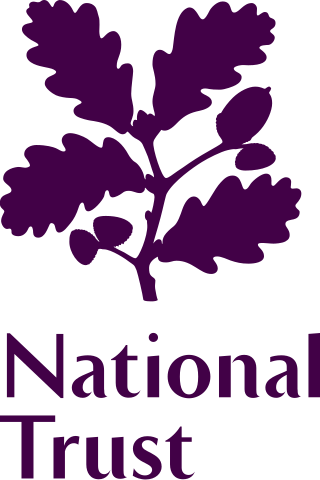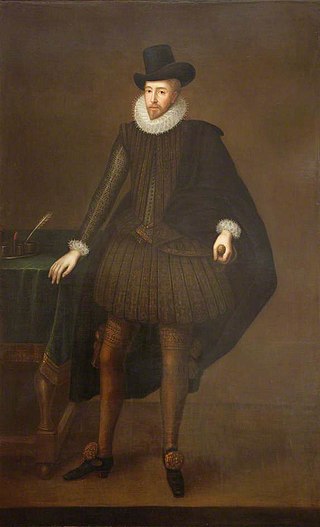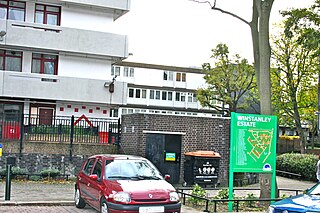Related Research Articles

Diana, Princess of Wales, was a member of the British royal family. She was the first wife of Charles III and mother of Princes William and Harry. Her activism and glamour made her an international icon, and earned her enduring popularity.

Leeds Castle is a castle in Kent, England, 7 miles (11 km) southeast of Maidstone. It is built on islands in a lake formed by the River Len to the east of the village of Leeds. It is a historic Grade I listed estate.

The National Trust is a charity and membership organisation for heritage conservation in England, Wales and Northern Ireland. In Scotland, there is the separate and independent National Trust for Scotland.

A charitable trust is an irrevocable trust established for charitable purposes. In some jurisdictions, it is a more specific term than "charitable organization". A charitable trust enjoys varying degrees of tax benefits in most countries and also generates goodwill. Some important terminology in charitable trusts includes the term "corpus", referring to the assets with which the trust is funded, and the term "donor," which is the person donating assets to a charity.
The Nuffield Foundation is a charitable trust established in 1943 by William Morris, Lord Nuffield, the founder of Morris Motors Ltd. It aims to improve social well-being by funding research and innovation projects in education and social policy, and building research capacity in science and social science. Its current chief executive is Tim Gardam.

Tides Foundation is a left-leaning donor advised fund based in the United States. It was founded in San Francisco in 1976 by Drummond Pike. Tides distributes money from anonymous donors to other organizations, which are often politically progressive. An affiliated group, Tides Advocacy, is a "massive progressive incubator." Tides has received substantial funding from George Soros.

Cancer Research UK (CRUK) is the world's largest independent cancer research organisation. It is registered as a charity in the United Kingdom and Isle of Man, and was formed on 4 February 2002 by the merger of The Cancer Research Campaign and the Imperial Cancer Research Fund. Cancer Research UK conducts research using both its own staff and grant-funded researchers. It also provides information about cancer and runs campaigns aimed at raising awareness and influencing public policy.

The Wellcome Trust is a charitable foundation focused on health research based in London, in the United Kingdom. It was established in 1936 with legacies from the pharmaceutical magnate Henry Wellcome to fund research to improve human and animal health. The aim of the Trust is to "support science to solve the urgent health challenges facing everyone." It had a financial endowment of £29.1 billion in 2020, making it the fourth wealthiest charitable foundation in the world. In 2012, the Wellcome Trust was described by the Financial Times as the United Kingdom's largest provider of non-governmental funding for scientific research, and one of the largest providers in the world. According to their annual report, the Wellcome Trust spent GBP £1.1Bn on charitable activities across their 2019/2020 financial year. According to the OECD, the Wellcome Trust's financing for 2019 development increased by 22% to US$327 million.
City Bridge Foundation is the working name of the historic Bridge House Estates, which originated in the late eleventh century and was formally established by royal charter in 1282 by the City of London Corporation in London, England. It is a registered charity governed by a single trustee the City of London Corporation, represented by the City Bridge Foundation Board.

Sir Henry Solomon Wellcome was an American pharmaceutical entrepreneur. He founded the pharmaceutical company Burroughs Wellcome & Company with his colleague Silas Burroughs in 1880, which is one of the four large companies to eventually merge to form GlaxoSmithKline. He left a large amount of capital for charitable work in his will, which was used to form the Wellcome Trust, one of the world's largest medical charities. He was a keen collector of medical artefacts which are now managed by the Science Museum, London, and a small selection of which are displayed at the Wellcome Collection.

St Helier is a residential cottage estate in the London boroughs of Merton and Sutton. The portion of the estate north of Green Lane and Bishopsford Road is in Merton, the remainder is in Sutton.
Fox Primary School is a primary school in London for children between the ages of 4 and 11, in the Royal Borough of Kensington and Chelsea. It is located on Kensington Place, between Kensington Church Street and Notting Hill Gate.
The George Gund Foundation is a charitable foundation established in 1952 to provide grants in the areas of the arts, civic engagement, community development, economic development, environmental policy, and human services, public education, racial inequality. As of 2019, the foundation had made grants totaling more than $722 million since its inception. It is the second-largest charitable foundation in Cleveland.
Headley Down is a village within the civil parish of Headley in the East Hampshire district of Hampshire, England, bounded on two sides by Ludshott Common, a National Trust heathland reserve. The village began with a few buildings in the 1870s and became a thriving community that in the 20th century outgrew the parish centre of Headley.
The Burroughs Wellcome Fund (BWF) is an American non-profit medical research organization that provides funding for biomedical research, STEM education, and areas of career development for scientists. Since 1970, it has been headquartered in North Carolina's Research Triangle Park.

Baptist Hicks, 1st Viscount Campden was an English cloth merchant and politician who sat in the House of Commons between 1621 and 1628. King James I knighted Hicks in 1603 and in 1620 he was created a baronet.

Pelham Crescent is a circa 1825 Georgian crescent of houses in South Kensington, London SW7, England, designed by architect George Basevi. Numbers 1–14 and 15–27 are separately Grade II* listed.

Holland House, originally known as Cope Castle, was an early Jacobean country house in Kensington, London, situated in a country estate that is now Holland Park. It was built in 1605 by the diplomat Sir Walter Cope. The building later passed by marriage to Henry Rich, 1st Baron Kensington, 1st Earl of Holland, and by descent through the Rich family, then became the property of the Fox family, during which time it became a noted gathering-place for Whigs in the 19th century. The house was largely destroyed by German firebombing during the Blitz in 1940 and today only the east wing and some ruins of the ground floor and south facade remain, along with various outbuildings and formal gardens. In 1949 the ruin was designated a grade I listed building and it is now owned by the Royal Borough of Kensington and Chelsea.

1–5 and 6 Sydney Place, South Kensington, are a group of large terrace houses situated on the corner of Sydney Place and Fulham Road in London, United Kingdom. Sydney Place leads into Onslow Square. The buildings have been listed Grade II as a group on the National Heritage List for England since 1969.

The Winstanley and York Road Estate comprises two large estates of predominantly public housing apartments in Battersea, London, adjacent to Clapham Junction railway station, although some have since passed into private ownership.
References
- ↑ Stephen Satchell (19 September 2009). Optimizing Optimization: The Next Generation of Optimization Applications and Theory. Academic Press. p. 79. ISBN 978-0-08-095920-7.
- 1 2 "About Us". The Henry Smith Charity.
- 1 2 "The Smith's Charity Estate: Development up to the early nineteenth century". British History Online.
- ↑ "Wellcome Trust to buy land developer Urban & Civic". The Times. 7 November 2020. Retrieved 4 March 2024.
- ↑ Mairéad Bailie; Ian Pembridge; Jennifer REYNOLDS (2 September 2019). Directory of Grant Making Trusts 2020/2021 26th Edition. Directory of Social Change. p. 972. ISBN 978-1-78482-061-9.